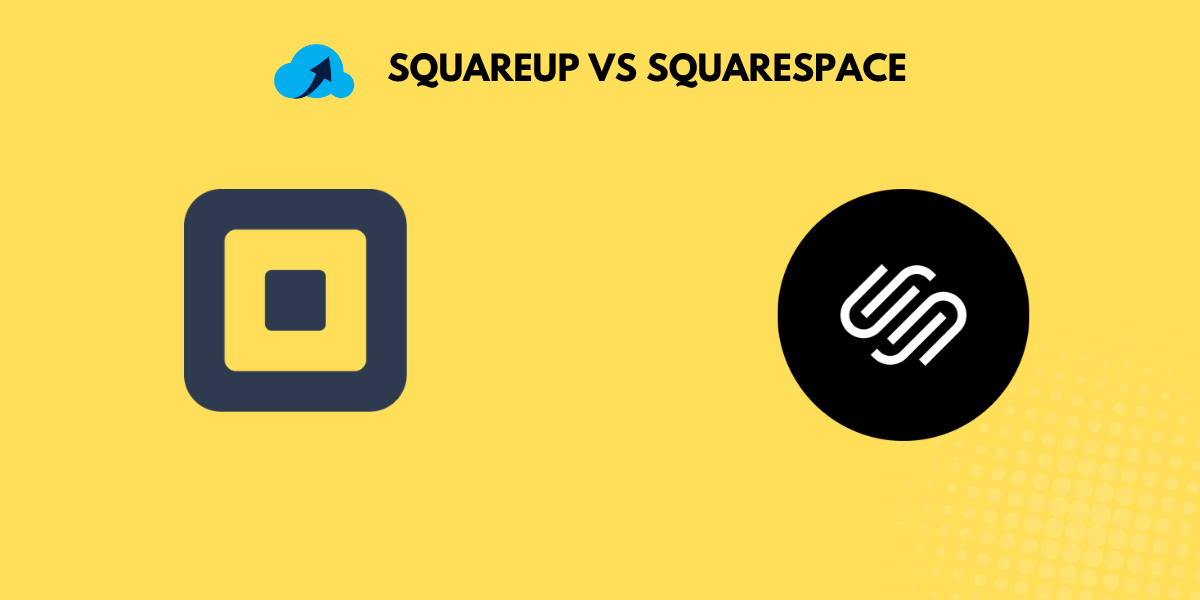Choosing the right platform for your business can significantly impact your success. In today’s digital landscape, two popular options stand out: Squareup and Squarespace. While both serve distinct purposes, understanding their features, pricing, and user experiences will help you make an informed decision.
This article delves into the nuances of Squareup and Squarespace, comparing their offerings to guide you in selecting the best fit for your needs.
What is Squareup?

Squareup, commonly known as Square, is primarily a payment processing solution that caters to businesses of all sizes. In 2009, Square revolutionized how merchants accept payments by providing a seamless point-of-sale (POS) system that integrates hardware and software.
Squareup Features
Squareup’s features cater primarily to businesses focused on in-person sales but extend into e-commerce as well:
1. User-friendly interface for In-Person Sales
Square’s POS system is designed for ease of use. Merchants can set up their registers quickly and accept payments immediately after installation.
2. Comprehensive Reporting and Analytics Tools
Square provides detailed reports on sales trends, customer behavior, and inventory levels. This data helps businesses make informed decisions about their operations.
3. Customer Relationship Management (CRM) Features
Square includes basic CRM functionalities that allow businesses to manage customer information effectively. Users can track customer purchase history and send targeted promotions based on buying patterns.
4. Mobile App Functionalities
The Square mobile app enables merchants to accept payments on the go. This feature particularly benefits event vendors or those operating in multiple locations.
What is Squarespace?

Squarespace is a website-building platform that empowers users to create visually stunning websites without requiring extensive technical knowledge. Launched in 2003, Squarespace has become synonymous with high-quality design and user-friendly interfaces.
Squarespace Features
Squarespace shines in its design capabilities while also offering essential features for online businesses:
1. Template Variety and Customization Options
With dozens of templates available across various categories (businesses, portfolios, blogs), Squarespace allows users to create unique websites tailored to their needs.
2. E-commerce Tools
Squarespace’s e-commerce capabilities include product pages with high-resolution images, inventory management tools, discount codes, and abandoned cart recovery options—vital features for online retailers.
3. Blogging Functionalities
Squarespace’s blogging platform supports multimedia content including images and videos. Users can schedule posts in advance and utilize SEO features to enhance discoverability.
4. Built-in Marketing Tools
Squarespace offers integrated marketing tools such as email campaigns that allow users to reach out to customers directly from the platform without needing third-party services.
Pricing Comparison
When considering Squareup vs Squarespace, pricing structures differ significantly based on the services offered:
Squareup Pricing Structure
Square operates on a pay-as-you-go model with no monthly fees for basic services:
- Transaction Fees: Typically around 2.6% + 10¢ per transaction for card swipes.
- Hardware Costs: Businesses must invest in necessary hardware (e.g., card readers) which vary in price depending on the model.
- Additional Services: Some advanced features may incur additional costs (e.g., payroll services).
Squarespace Pricing Plans
Squarespace offers several subscription tiers:
- Personal Plan: Starts at $16/month; suitable for basic websites.
- Business Plan: Starts at $23/month; includes e-commerce functionalities.
- Basic Commerce Plan: Starts at $27/month; designed specifically for online stores.
- Advanced Commerce Plan: Starts at $49/month; includes advanced e-commerce features like subscriptions and advanced shipping options.
Overall costs will depend on the specific needs of your business—whether you prioritize payment processing or website design.
Ease of Use
User experience varies between the two platforms:
1. Squareup’s Simplicity for In-Person Sales
Squareup’s interface is intuitive for merchants who need quick access to payment processing tools. Setting up a POS system takes minimal time, making it ideal for those who want to hit the ground running.
2. Squarespace’s Drag-and-Drop Editor
While Squarespace’s drag-and-drop editor makes it relatively easy to design a website without coding knowledge, some users may find the learning curve steep when exploring advanced customization options or e-commerce functionalities.
Design and Customization
Design plays a crucial role in branding:
1. Squareup’s Basic Templates vs. Squarespace’s Extensive Design Options
Squareup offers basic templates primarily focused on functionality rather than aesthetics. In contrast, Squarespace excels in providing visually appealing designs that can elevate a brand’s presence online.
Customizability is another factor; while Square allows some adjustments within its templates, Squarespace offers far more flexibility in terms of layout modifications and overall design aesthetics.
E-commerce Capabilities
When it comes to e-commerce functionality:
1. Squareup’s Strengths in POS vs. Squarespace’s Comprehensive Online Store Features
Squareup excels in point-of-sale solutions tailored for physical retail environments but has limited e-commerce capabilities compared to Squarespace.
Squarespace provides a full suite of online store features including customizable product pages, advanced inventory management options, promotional tools like discount codes, and analytics tailored specifically for online sales performance.
2. User Reviews and Feedback
Understanding user experiences can provide valuable insights into each platform:
Common Praises for Squareup
- Ease of Use: Users appreciate how quickly they can set up their systems.
- Reliability: Many reviews highlight the stability of transactions during peak business hours.
Common Praises for Squarespace
- Design Quality: Users frequently commend the aesthetic appeal of templates.
- Customer Support: Many find Squarespace’s support team responsive and helpful when issues arise.
Criticisms
- Squareup: Some users note limitations in reporting features compared to dedicated accounting software.
- Squarespace: A recurring criticism involves the higher cost relative to competitors offering similar functionalities at lower prices.
Conclusion
In summary, choosing between Squareup and Squarespace largely depends on your business needs:
- If you operate a physical store or require robust payment processing solutions with straightforward POS capabilities, Squareup is likely your best bet.
- Conversely, if your focus is on creating an aesthetically pleasing website with strong e-commerce functionalities or if you plan to maintain an active blog alongside your online store, then Squarespace would be more suitable.
Ultimately, assess your specific requirements—whether they lean towards payment processing or website design—to make an informed decision that aligns with your business goals.
Have you used either Squareup or Squarespace? Share your experiences in the comments below! Your insights could help others navigate their choices more effectively. Don’t forget to subscribe to our blog for more software reviews and comparisons!
Recommended Readings For You:

